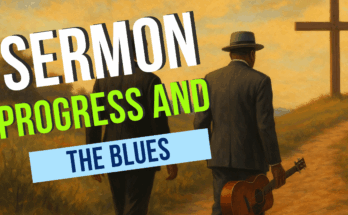As an Amazon Associate I earn from qualifying purchases.
An interesting question came in this week.
When do you tell people the point of the sermon? Is it in the introduction or some other point of the sermon?
In The Beginning
This is a good question, but there is no one answer to the question. Some of us were taught that a sermon is like any other oral speech. In that you follow three steps.
1) Tell people what you fixin’ to tell them
2) Tell people
3) Tell people what you told them
 Then some folks would tack on a celebration and/or appeal at the end. If you follow that kind of method then you would introduce the point early in the sermon. Perhaps in the introduction you would tell them exactly what the sermon is about and where you are going.
Then some folks would tack on a celebration and/or appeal at the end. If you follow that kind of method then you would introduce the point early in the sermon. Perhaps in the introduction you would tell them exactly what the sermon is about and where you are going.
This is a tried and true method that many have used over the years. The nice thing is that you don’t have to worry about folks misunderstanding what you are trying to say. However, sometimes these types of sermons can lose people as they get bored. You have totally eliminated any suspense which can help keep people involved.
Towards The End
Now some folks have looked at this and have said, maybe we aught to push the sermon point towards the end. The sermon is like a puzzle that the hearers put together and at the very end the full story hits you.
the nice thing about such an approach is that it encourages more participation with the people as they piece the sermon together. Also, the congregation can hear sermons like this while they would not be in a position to hear the first kind of sermon. For example, look at Nathan the prophet talking to King David. Nathan told the king a story. The king listened intently to the sermon. He did not get the point until the very end of the story and it hit him hard. David might not have been able to hear that kind of message if Nathan had attempted an approach like the first one of telling him in the beginning the point.
however, these kinds of sermons are not all that easy to construct. Here you may lose people not due to a lack of suspense but due to not progressing the sermon to conclusion fast enough.
Now there are other approaches as well such as never telling the point but letting the people learn the point later as their lived experience interacts with the message. At any rate, there is no one way to do this. Personally, I usually use the first method which I describe in the ebook “Three Points And a Poem.” But, I do recognize that there is a time for the second approach as well. Find out what is needed in your congregation and preach the word.
Amazon and the Amazon logo are trademarks of Amazon.com, Inc, or its affiliates.





Well said! Balance is key. I prefer the “Nathan” method. It sucks the hearer into the messages are requires them to reamin engaged inorder to be fed properly. Which really is our goal, to feed the sheep.
Well put Bro Cox. I believe the “Point” is, to have a point…
I USE BOTH THE FIRST AND SECOND METHOD, BUT MOSTLY THE SECOND METHOD. IF IT’S DONE RIGHT THE PEOPLE WILL STICK WITH YOU TO
HEAR THE CONCLUSION OF THE WHOLE MATTER. I AGREE WITH YOU, IT
DOES TAKE QUITE A BIT OF SKILL TO PULL THIS TOGETHER, AND
KEEP THE CONGREGATION WITH YOU TO THE END. BOTH ARE VERY USEFUL,
BUT IN MY EXPERIENCE THE “NATHAN” METHOD SEEMS TO HAVE THE MOST
IMPACT. BE BLESSED AND KEEP UP THE GOOD WORK OF THE LORD.
Thanks for sharing I use no.1 & 2. God Bless